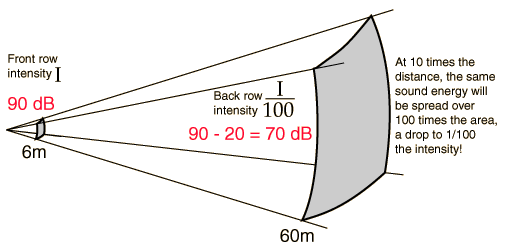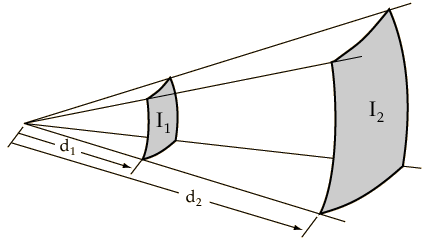The Inverse Square Law Problem
In an open area, sound drops off according to the inverse square law. In an auditorium where the front seats are 6 meters (20 ft) from the sound source and the back seats are 60 m (200 ft) from the sound source, the sound intensity would drop by a factor of 100 ( = 20 decibels ) between the front seats and the back seats if it followed this pattern. This is an unacceptable loss which is prevented partially by reverberation.

| Example in decibels | Rule of thumb for loudness |
Auditorium acoustics
| HyperPhysics***** Sound | R Nave |

